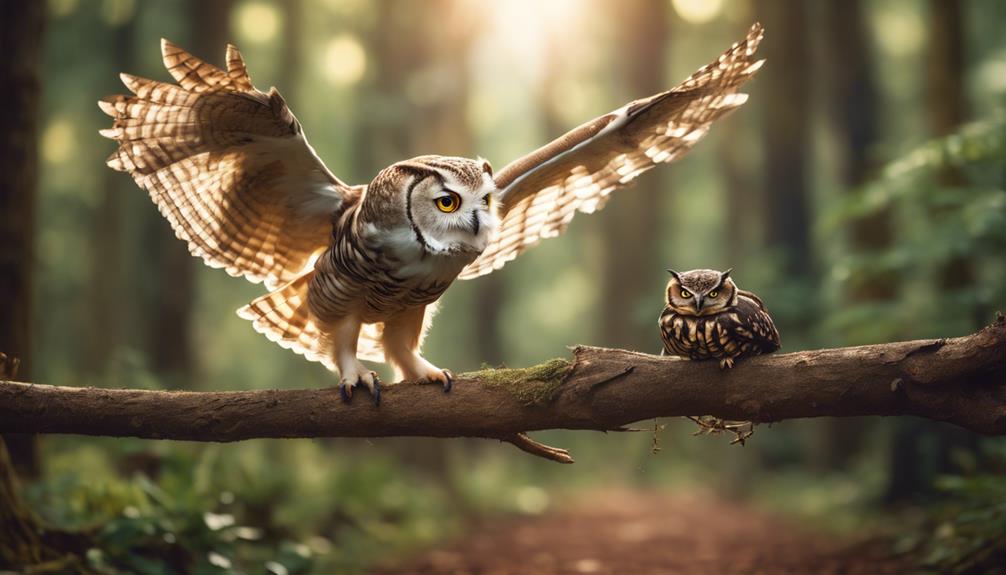You can gain valuable insights into self-improvement by observing the remarkable behaviors of animals in nature. Ants teach you the power of teamwork and the importance of roles. Dolphins showcase effective communication for strengthening relationships. Elephants show you how empathy can deepen emotional bonds, while lions demonstrate the value of leadership and collaboration. Witnessing a butterfly's transformation reminds you that growth requires patience and perseverance. Then, camels highlight resilience in harsh environments, and rodents exemplify altruism and cooperation. These diverse animal behaviors offer profound lessons that can inspire your own journey of self-improvement and growth.
Key Takeaways
- Embrace change and patience, like butterflies, to foster personal growth and transformation through life's challenges.
- Exhibit resilience and adaptability, as camels do, by conserving resources and thriving in difficult environments.
- Cultivate empathy and altruism, inspired by rodents, by prioritizing the needs of others and fostering social connections.
- Communicate effectively and build emotional bonds, as seen in dolphins and elephants, to enhance relationships and teamwork.
Lessons From Ants and Teamwork
When you observe ants working together, you can see how effective teamwork can lead to remarkable achievements that would be impossible for any single ant.
Each ant plays a specific role, whether it's a worker, soldier, or forager, demonstrating the power of collective effort. This collaboration allows them to tackle tasks that seem insurmountable, like lifting objects many times their own body weight.
The lessons from ants extend beyond teamwork; they teach us about resilience and determination.
Ants persistently work to overcome obstacles, showing that success often requires a steadfast approach. When challenges arise, their ability to adapt and find solutions is essential.
Communication Skills From Dolphins
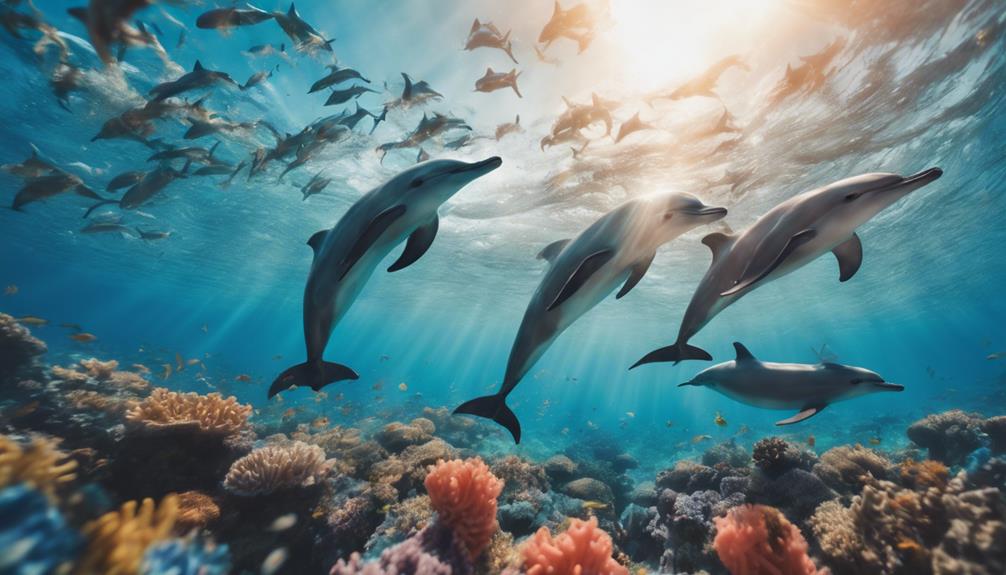
Dolphins exhibit remarkable communication skills that highlight the importance of social bonds and cooperation within their pods. They use a sophisticated system of clicks, whistles, and body language to convey messages, ensuring strong social bonds among pod members. Understanding these communication skills can teach you valuable life lessons about effective interaction and empathy.
Here's a quick comparison of dolphins' communication skills:
| Feature | Impact on Social Bonds |
|---|---|
| Vocalizations | Convey emotions and intentions |
| Non-verbal cues | Reinforce messages through actions |
| Adaptability | Tailor communication to context |
Dolphins can recognize their own calls and those of others, demonstrating their ability to remember social relationships. When they cooperate in hunting or playing, it's clear that effective communication is essential. They also employ physical gestures, such as leaping or swimming closely, to enhance their messages. By learning from dolphins, you can improve your own communication skills, fostering stronger social connections and enriching your interactions. Embrace the flexibility and empathy they embody, and you'll discover the value of adapting your communication style to better connect with others.
Emotional Bonds of Elephants
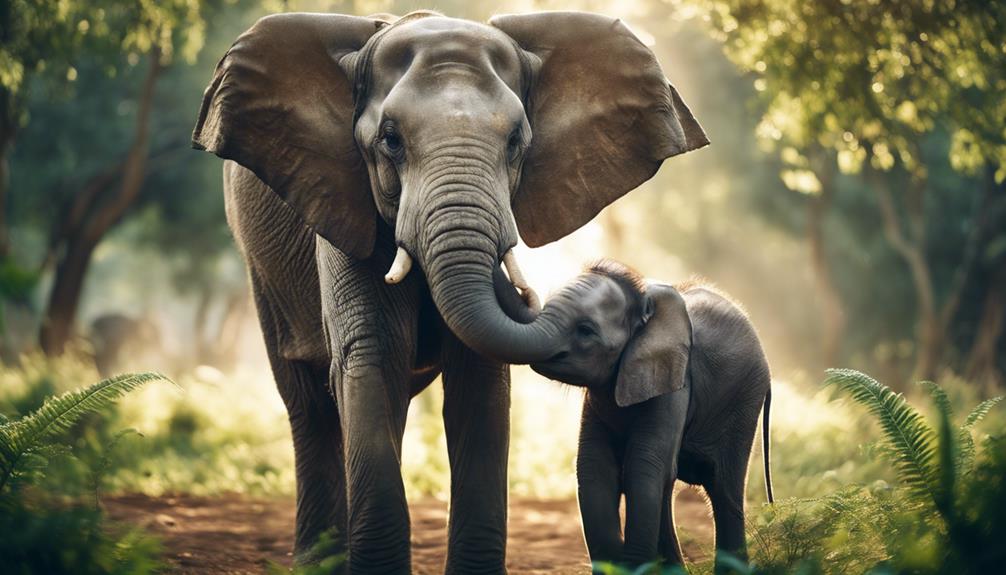
When you observe elephants, you can't help but notice their strong emotional connections. Their ability to show empathy and offer consolation to distressed members of their herd reveals a profound understanding of each other's feelings.
This behavior not only highlights the depth of their social bonds but also challenges how we view emotional intelligence in animals.
Empathy in Elephant Behavior
Elephants showcase remarkable empathy through their emotional bonds, often comforting distressed companions with gentle touches and soothing vocalizations. This behavior demonstrates a high level of emotional intelligence, revealing how deeply they understand and connect with one another.
When you observe elephants in the wild, you might notice how they mirror the emotions of their peers, indicating a profound awareness of others' feelings.
Research by Joshua Plotnik provides valuable lessons about the emotional depth of these animals, highlighting their ability to feel concern for one another.
For instance, elephant mothers are known for their strong protective instincts toward their calves, nurturing them throughout their development. This bond not only guarantees the calves' safety but also illustrates the importance of emotional support within the herd.
Consolation Among Elephant Herds
Observing the intricate ways Asian elephants console each other reveals a profound emotional bond that underscores their empathetic nature. These magnificent creatures offer emotional support through gentle touches and vocalizations, demonstrating a level of compassion rarely seen in the animal kingdom. By witnessing their interactions, you can glean valuable lessons about relationships and emotional intelligence.
Here are some key takeaways:
- Unconditional Love: Elephants show unwavering support for their herd members, emphasizing the importance of being there for one another.
- Emotional Contagion: When one elephant experiences distress, others often mirror that emotion, illustrating how interconnected we all are.
- Physical Touch Matters: Simple gestures, like trunk touches, can considerably alleviate distress, reminding us of the power of physical presence.
- Empathy in Action: Their behavior challenges our assumptions about emotional responses, urging you to recognize and nurture your own empathetic skills.
Leadership Insights From Lions
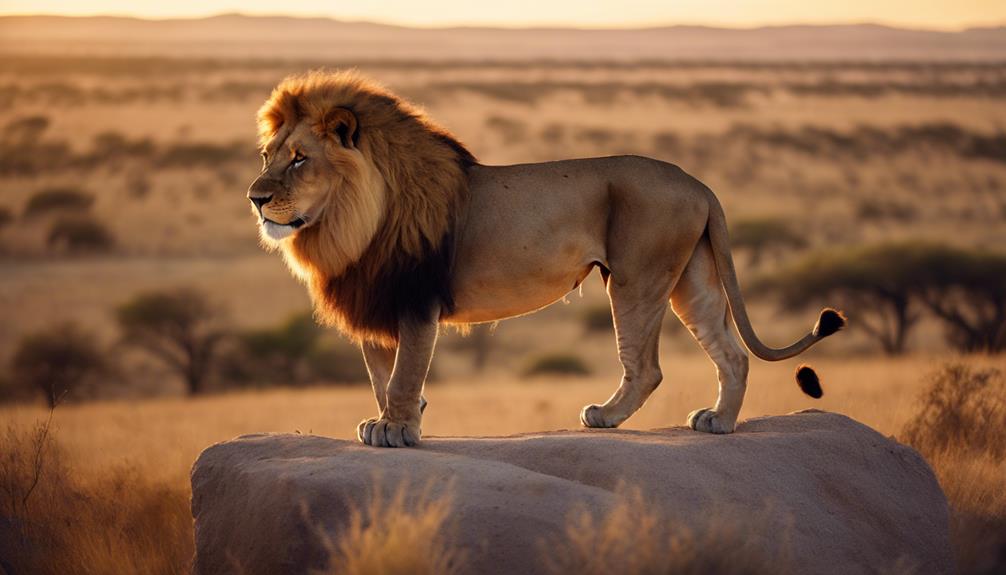
Leadership lessons from lions illustrate the power of teamwork and the importance of recognizing each member's unique strengths within a group. In a lion pride, females work together to hunt while males defend against threats, showcasing effective leadership through collaboration. This dynamic emphasizes how successful leadership hinges on understanding and utilizing the distinct abilities of each team member, much like the impactful messaging techniques used by motivational speakers of the 70s and 80s.
As a leader, you can learn from the lionesses' roles. They demonstrate that effective leadership isn't just about taking charge; it's about empowering others to contribute to the team's success. By recognizing the strengths of your team members, you can foster a sense of unity and shared purpose.
Communication plays a vital role in the pride's cohesion. Lions rely on vocalizations and body language to convey their intentions and feelings. As you lead, prioritize clear communication to build trust and strengthen relationships within your team.
Ultimately, the balance of authority and compassion seen in lion prides serves as a powerful reminder that great leadership involves not just guiding others, but also valuing their contributions and maintaining open lines of communication. Embrace these insights, and watch your leadership skills thrive.
Transformation Through Butterflies

Just as lions exemplify teamwork and strength, butterflies embody the beauty of transformation and personal growth through their incredible metamorphosis. This process highlights the power of embracing change and showcases how significant internal shifts can lead to remarkable external results.
Here are four lessons you can take from butterflies:
- Embrace Change: Just like butterflies, you must learn to welcome change as a necessary part of your journey.
- Patience is Key: The pupal stage requires time and effort, reminding you that personal growth is often a gradual process.
- Celebrate Uniqueness: Butterflies display vibrant colors and patterns, encouraging you to express your individuality and leverage your strengths.
- Persevere through Challenges: Emerging from the chrysalis symbolizes the effort needed to overcome obstacles, teaching you that perseverance is essential for transformation.
Resilience Lessons From Camels

Camels teach us valuable resilience lessons, demonstrating how to thrive in the harshest conditions through adaptability and resourcefulness.
These incredible animals can withstand extreme temperatures, enduring frigid nights and scorching days without succumbing to heat stress. Their ability to go for up to two weeks without water shows remarkable resilience; they efficiently metabolize fat stored in their humps to survive.
Moreover, camels have unique adaptations that enhance their resourcefulness. For instance, their nostrils can close to keep out sand, while their thick eyelids protect their eyes from harsh desert elements. This adaptability allows camels to navigate their challenging environments effectively.
When faced with scarcity, camels display a profound ability to conserve water and electrolytes, enduring dehydration levels that would be fatal for most mammals. They often travel great distances in search of food and water, showcasing not just endurance but also the importance of patience and persistence in tough situations.
Empathy in Marine Mammals
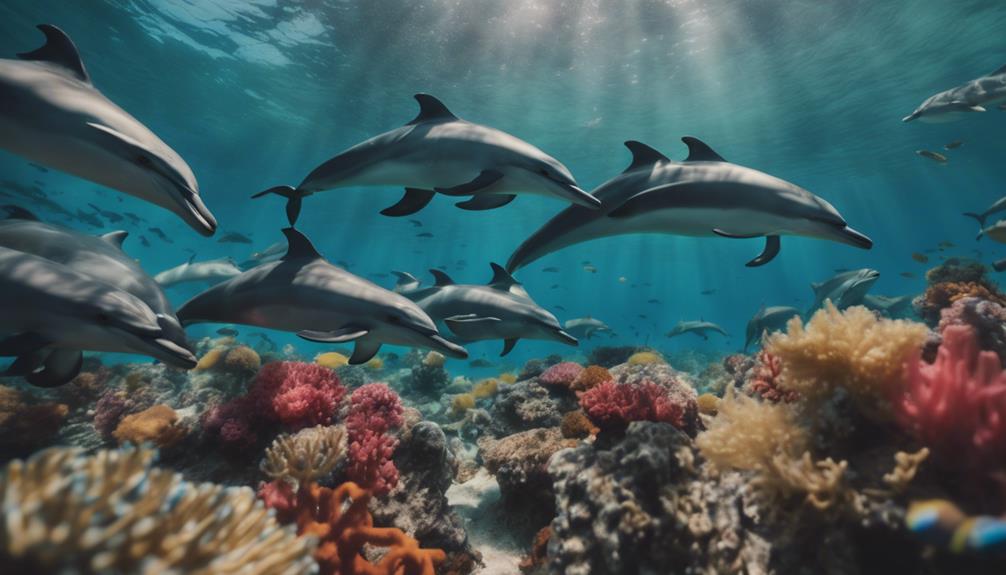
While resilience in harsh environments is essential, the emotional connections among marine mammals reveal another layer of survival—one rooted in empathy and social bonds. These incredible creatures demonstrate profound emotional intelligence, showcasing how empathy can enhance their lives and our understanding of the animal kingdom.
Here are four key examples of empathy in marine mammals:
- Orcas' Bonds: Orcas exhibit strong emotional ties, particularly between mothers and their calves, highlighting their complex social structures.
- Rescue Behavior: Humpback whales have been known to rescue other marine animals from orca attacks, illustrating their altruistic nature.
- Mourning Rituals: The grief displayed by orca mother J-35 and her pod after losing a calf shows the deep emotional capacity of these animals.
- Consoling Actions: Research indicates that marine mammals can console one another, similar to elephants, reinforcing the shared capacity for empathy across species.
Altruism in Rodents
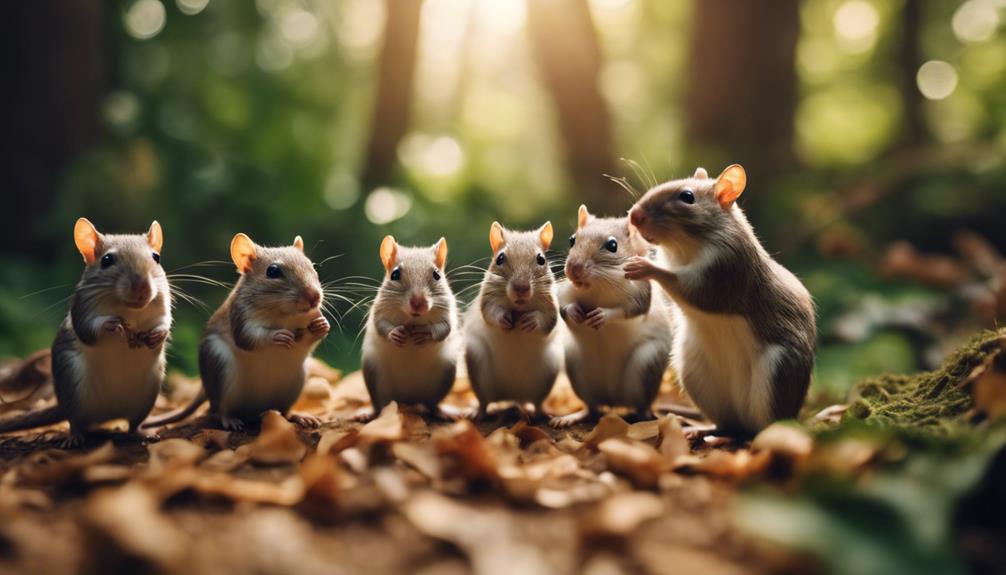
When you observe rodent behavior, you'll notice surprising acts of empathy and cooperation that challenge your ideas about animal social dynamics.
For instance, rats not only save trapped companions but also share food with hungry peers, highlighting their strong social bonds.
As you explore these behaviors, you'll uncover a deeper understanding of how altruism plays a role in their lives.
Empathy in Rodent Behavior
Empathy in rodents reveals a fascinating layer of social interaction, as studies show that rats often prioritize helping trapped companions over seeking food rewards. This altruistic behavior highlights the emotional depth of these animals and offers valuable lessons for self-improvement. Here are four key insights from rodent empathy that you can consider:
- Acts of Kindness: Rats have been observed freeing companions, showcasing their ability to act selflessly.
- Comforting Behavior: Voles comfort distressed peers, which is linked to oxytocin release, emphasizing the importance of emotional support.
- Prioritizing Relationships: Research indicates that rats will save drowning companions instead of indulging in food, showing that social bonds matter more than personal gain.
- Generosity in Sharing: When aware of others' hunger, rats are more generous with food, illustrating the significance of understanding others' needs.
These behaviors remind us that empathy isn't just a human trait; it's a vital aspect of animal behavior. By observing these lessons in empathy, we can cultivate stronger social connections and foster a more supportive environment in our own lives.
Social Dynamics and Cooperation
Rodents demonstrate remarkable social dynamics through their altruistic behaviors, revealing a deep commitment to cooperation and support within their communities. For example, empathic rats have been observed freeing trapped companions, showing strong social bonds and a readiness to assist those in distress. This kind of behavior isn't just about instinct; it highlights their ability to empathize with others.
Voles, too, exhibit comforting actions towards their distressed peers, tied to the hormone oxytocin, which suggests a biological underpinning for their empathic responses. Research shows that when faced with a choice, rats prioritize saving drowning companions over seeking food rewards, emphasizing their dedication to social welfare over personal gain.
Additionally, studies indicate that when rats recognize others' hunger, they share food more generously, underlining their capacity for empathy and cooperative behavior. These insights into the cognitive and emotional lives of rodents challenge traditional views on animal intelligence, illustrating that their social dynamics are complex and deeply rooted in cooperation.
Frequently Asked Questions
What Life Lessons Do Animals Teach Us?
Animals teach you valuable life lessons about teamwork, communication, emotional connections, leadership, and purpose. By observing their behaviors, you can learn how to foster relationships, overcome challenges, and contribute meaningfully to your community.
What Animals Can Teach Us About Being Better Human Beings?
Have you ever watched a team of ants work together? Animals show you the importance of teamwork, communication, and loyalty. By observing their behaviors, you can learn to strengthen your own relationships and community connections.
In What Ways Can Animals Improve People's Lives?
Animals improve your life by reducing stress, boosting emotional well-being, and encouraging physical activity. They foster responsibility and empathy, enhance social skills, and provide companionship, all contributing to a healthier, happier existence.
What Can Studying Animal Behavior Teach Us About the World in Which We Live?
Studying animal behavior reveals both simplicity and complexity in social interactions. You'll discover how empathy and cooperation thrive in nature, teaching you valuable lessons about community, connection, and the intricate balance of life around you.
How Can Animals Teach Us About Grace and Self-Improvement?
Animals can provide valuable lessons in understanding grace selfimprovement context. Through their behaviors and interactions, animals demonstrate patience, resilience, and adaptability, all of which are essential components of self-improvement. By observing and learning from animals, we can gain a deeper understanding of grace and how to apply it in our own lives.
Conclusion
Incorporating these animal lessons into your life can help you grow in ways you never thought possible.
By embracing teamwork like ants, communicating with clarity like dolphins, and showing empathy like marine mammals, you'll find yourself thriving.
Remember, it's not just about surviving the daily grind; it's about learning from nature's best.
So, take a page from their book and watch how you can turn over a new leaf in your personal journey.

